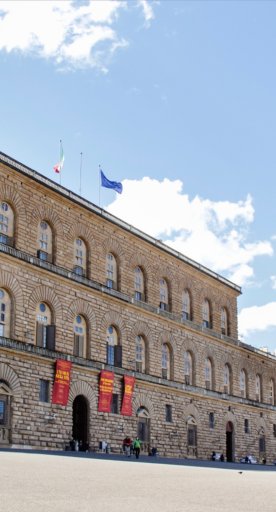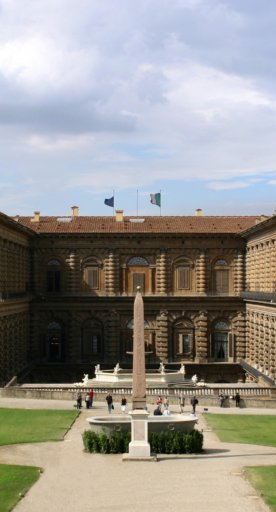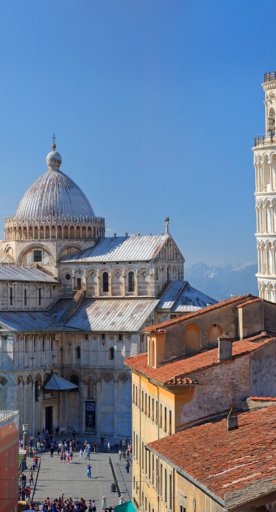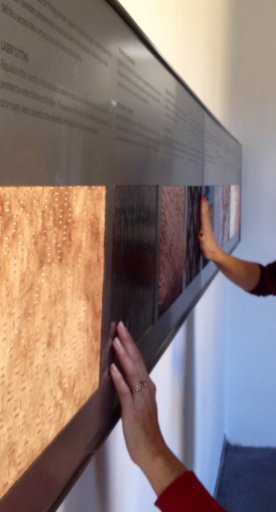Haunting Tales of Tuscany
Some of the eerier legends from Tuscan folklore
There are many sinister legends to tell about our region: eldritch characters, ghosts roaming castles and villas, sites inhabited by wandering souls. And much more.
Get ready to discover the dark side of Tuscany!
-
1.The ghost of Brolio Castle in Chianti
-
2.The Golden Hen of Chiusi
-
3.The ghost of Vincigliata Castle in Fiesole
-
4.The ghosts of Castiglioncello del Trinoro
-
5.The ghost of Villa di Corliano near Pisa
-
6.The ghost of Palazzo Vecchio in Florence
-
7.The witches of Monte Matanna (Apuan Alps)
-
8.The legend of Babao
The ghost of Brolio Castle in Chianti

In Brolio, in Gaiole in Chianti, there stands a castle that has belonged to the Ricasoli family since 1141. Bettino Ricasoli, who lived in the 19th century, was known as the “Iron Baron” on account of the ruthlessness with which he treated even his own subjects. He ruled his domain until 1880, when he died of a heart attack in his castle.
The Baron’s body was not buried immediately but was kept near the altar of the crypt in the family chapel. It was not long before rumours began to circulate, then spread across the Chianti area, about strange appearances around the castle. His funeral was marked by disturbing events: the wind began to blow, the windows opened and slammed as if moved by an invisible hand. A swarm of moths invaded the chapel, causing many of the mourners to disperse.
As if that were not enough, the coffin was so heavy that the pallbearers let it fall as if it were full of stones. No one could lift it. Then the priest arrived.
He said a few words in Latin and, to everyone's amazement, the coffin suddenly became light. It is said that the damned souls were safely confined to one place and the coffin of the baron was then buried in a ravine. It seemed like an appropriate location for the final resting place of the baron, but from that moment an endless series of appearances began.
The Golden Hen of Chiusi

Between the 7th and 5th centuries B.C., Chiusi was one of the most important Etruscan cities. Pliny the Elder wrote that the legendary Etruscan king Porsenna was buried in a magnificent tomb in a huge labyrinth and, according to a medieval legend, his sarcophagus was kept in a golden chariot drawn by twelve golden horses, watched over by a hen and 5000 golden chicks.
For a long time, popular tradition has identified the burial place of Porsenna with the tunnels running underneath Chiusi. It is said that some nights a swarm of tiny, golden, sparkling lights emerges. It is the golden hen of Porsenna, taking her chicks out onto the fields around Chiusi.
The ghost of Vincigliata Castle in Fiesole

Of all the stories that lurk behind the walls of Vincigliata Castle, in Fiesole, one of the most famous is the legend of the Donna Bianca (White Woman), a young and beautiful girl, courted by many men, but in love with the son of her family's worst enemy.
Despite this, their love seemed to triumph until their wedding day, when Donna Bianca’s brothers killed her groom. Bianca, in her wedding dress, died of a broken heart. Ever since that moment, her spirit has stayed inside the castle, protecting all kinds of love matches, especially the most difficult.
The ghosts of Castiglioncello del Trinoro
In Castiglioncello del Trinoro, near Sarteano in the province of Siena, there lie the ruins of an ancient church, half-engulfed by the forest.
Some nights, if you pass by the church, you can hear a drunken chorus singing a sort of lullaby, “Balla Candelora!”. Legend has it that once upon a time a group of revellers were in the church, dancing and singing this particular song, when the floor opened up and a flaming abyss consumed them.
The ghost of Villa di Corliano near Pisa

An ancient legend has it that in the Villa della Seta in Corliano, between Pisa and Lucca, the ghost of Teresa della Seta Bocca Gaetani still lingers on. A beautiful woman from an ancient Pisan family, she married Count Cosimo Baldassarre Agostini in 1755.
The lady appears occasionally in the halls of the villa, twitching the family tapestries and ornaments, slamming doors and windows. Some nights, when there is a full moon, the lady goes riding through the footpaths of the park, driving a horse and cart. The current owners of the villa say that sometimes they can hear her laughing in the cellars.
The ghost of Palazzo Vecchio in Florence

It is not uncommon to hear squeaking and moving footsteps coming from the Palazzo Vecchio, in Florence, after opening hours. There are corners that remain shrouded in mystery, where the ghosts come out to play. It is said that many ghosts live in the palace, but one is more famous than others: Baldaccio d’Anghiari.
If you wish to avoid an encounter, observe the following rules: do not scream his name, in fact, do not name him without reason at all; speak with respect, indulgence and in a low voice. Baldaccio was a valiant warrior and he was betrayed and killed inside the Palazzo Vecchio in 1441. Since then, he has been wandering around the building and, on September 6, you can also see him in the Castello dei Sorci of Anghiari, his birthplace.
The witches of Monte Matanna (Apuan Alps)
Mount Matanna is a favourite haunt for witches’ covens. Witches once went there to perform mysterious rituals, and shepherds recalled seeing flames and bright streaks of fire on the mountainside. Even today, you can see a strange-shaped rock which looks like as if it was used as a smooth table, located under a large natural arch along the path from Matanna to Mount Procinto.
It was here that the witches used to sacrifice their victims and cast their spells. It is a place best avoided at night. It seems there is a fabulous treasure trove (rumoured to be a golden calf) that no one has ever managed to find. Legend has it that it is guarded by a terrifying, scythe-wielding ghost.
The legend of Babao
Everywhere in Tuscany the Babao is known as a bogeyman who preys on children. He usually dwells in dark places, where children are not allowed. Parents throughout Tuscany tell their little ones "Don't go there, there is the Babao". But there is no reason to fear – the Babao has not been seen in many years.
The original version of this article was written by Serena Puosi.
















































































